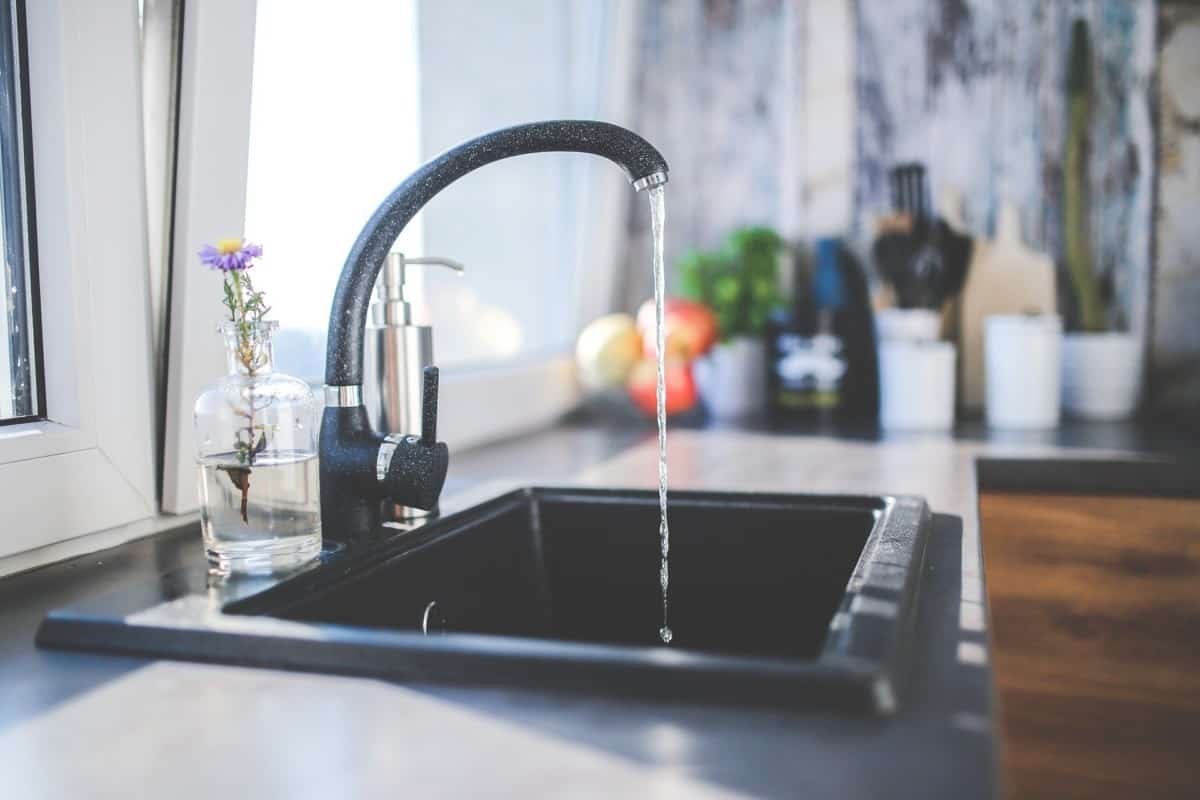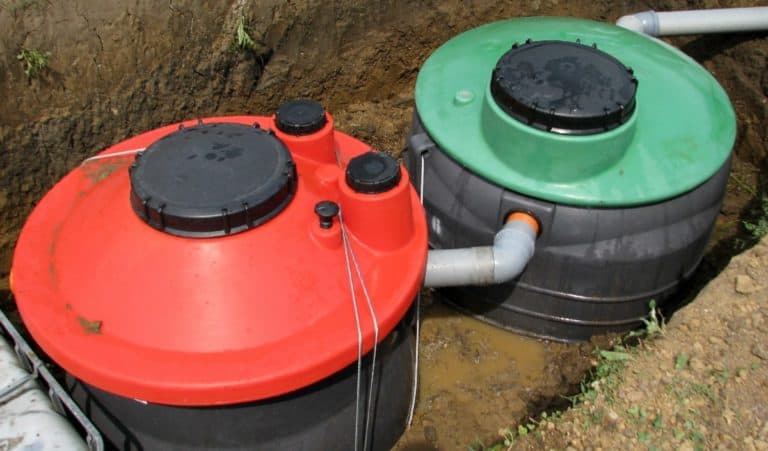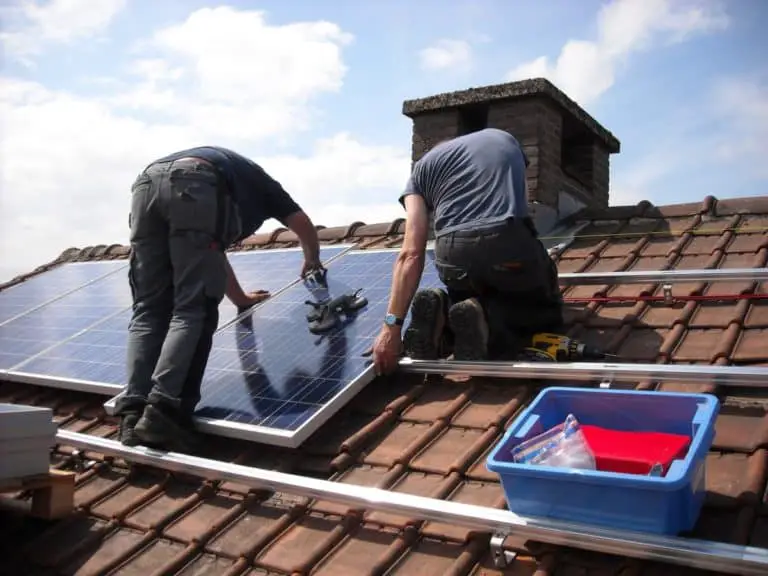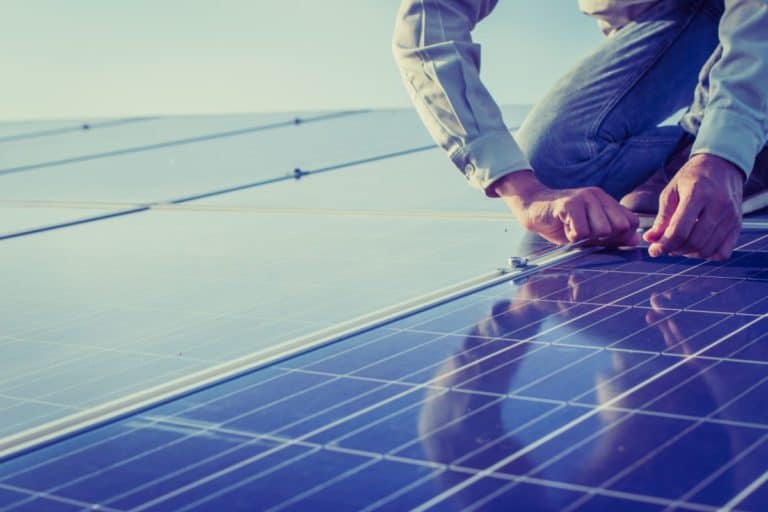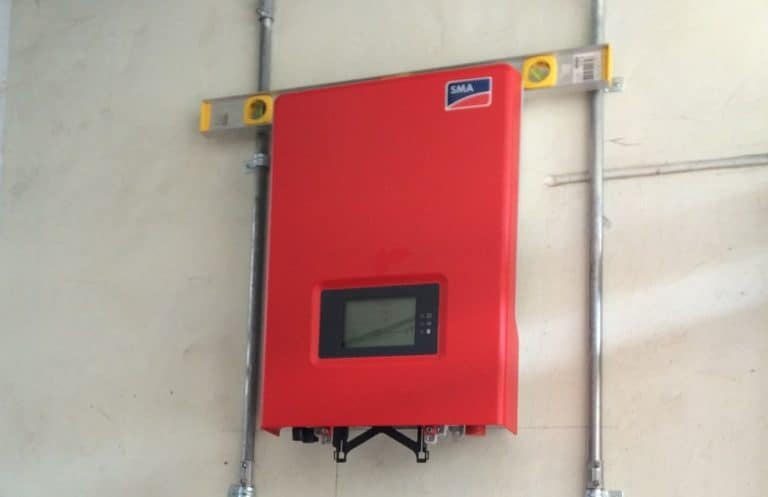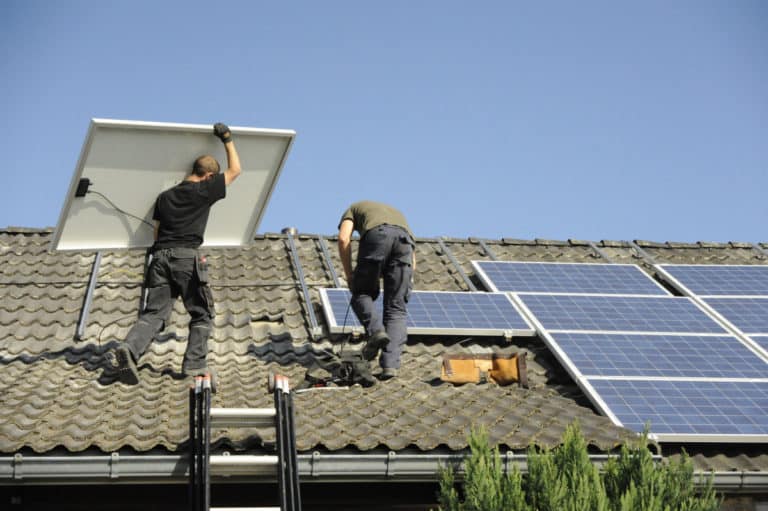How to Get an Off-Grid Water Supply Without a Well
Wells are a fantastic way to supply water to your off-grid home, but they aren’t always practical. If you don’t have the space or money to install one, what else can you do to get an off-grid water supply?
Without a well, the best off-grid water supply is from rainwater. One inch of rain falling on a 1,000 square foot area can yield 600 gallons. You can harvest it from an existing roof, a frame, or a tarp system. If necessary, you can supplement your supply by buying it in until you have enough stored.
A rainwater system has many variables, and you can set it up to suit your property and the resources you have available. This guide will give you everything you need to find a system to work for you.
Table of Contents
Rainwater collection
Rainwater collection is often viewed as a poor second to having a well. While there are many benefits to having a well, harvesting rainwater when done right can provide you with a plentiful supply of water.
The beauty of a rainwater system is that it is so versatile. Whatever your situation, it is likely there is some way that you can harvest at least a meager. Whether you choose an underground cistern storage system or you just put a bucket under your downpipe, there is no reason why you shouldn’t be benefiting from this incredible resource.
Why collect rainwater?
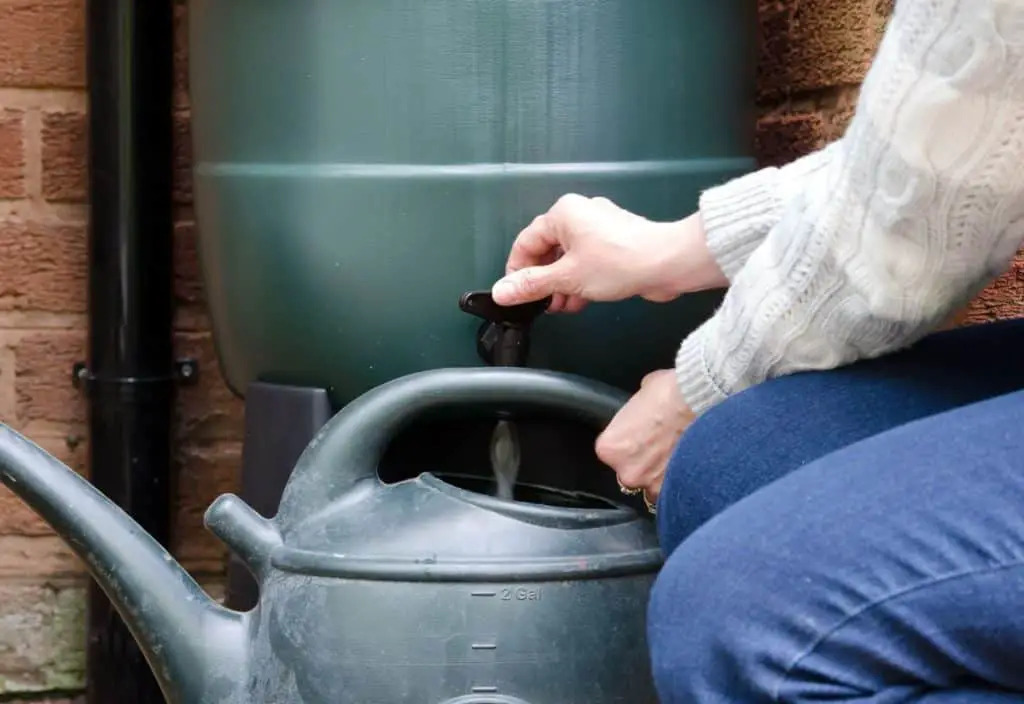
The better question would be, why not collect rainwater? If you’re off-grid, there a very few reasons for you to ignore such a supply. Even if you already have a supply of water, you should still consider collecting rainwater.
Here are some great reasons to collect rainwater:
- It’s free and can be obtained cheaply
- It’s naturally soft so won’t create limescale buildup
- It’s a green, energy-efficient source of water
- In many areas it is abundant- 1 inch of rain on 1,000 square foot gives 600 gallons
- If you have minimal rainfall, any that does fall can be stored
Read my recommendations for the best equipment for water supply and plumbing.
Will rainwater supply all my water needs?
With the correct filtration and purification, rainwater can be used for all of your household needs. Whether you have enough to fill all those needs throughout the year depends on the rainfall in your area and your capacity to store it.
According to the Environmental Protection Agency (EPA), the average American home uses 300gallons of water per day. That is about 9,000 gallons a month and 109,500 per year.
In 2019 the average rainfall in the United States was 34.78 inches, and the average roof size is 1,700 square feet. If you were able to collect every drop that fell on your roof, you would have 59,126 gallons of rainwater.
With these average numbers, this goes about halfway to meeting the needs of an average family home. However, there are some things you can do to bring these values closer together.
- Conserve water and reduce the amount you use.
- Recycle water, save greywater from sinks and washing machines to flush your toilets or water your garden.
- Use frames or tarp systems to create a larger area for rain collection.
- Supplement the rainwater by buying in some water or finding an alternative source.
Related reading: How can I heat water off-grid?
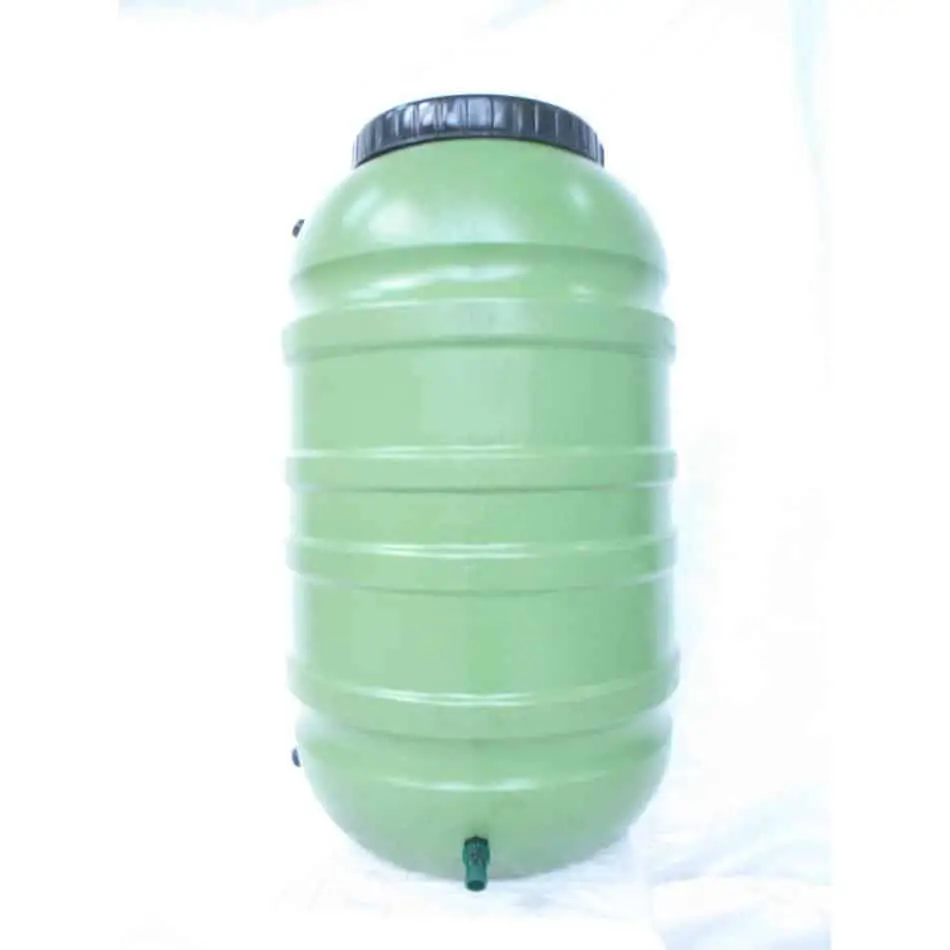
Home Depot has a selection of containers including these green 55-gallon rain barrels.
Rainwater collection on a roof
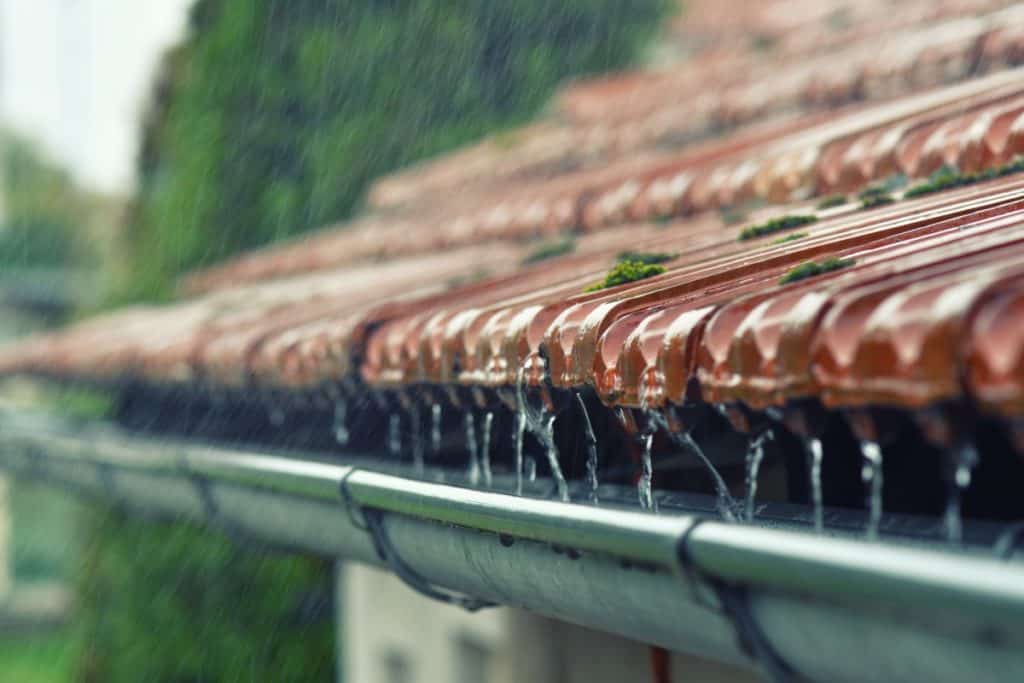
This is the most common method of rainwater harvesting because most off-grid homes include some form of roof area. Even in RVs, tiny homes, and tents, there is a surface that the rain will fall on.
By installing guttering, you can direct any rain that falls on your roof into a downpipe. The simplest form of rainwater collection is to place a bucket or barrel under it, but you can choose to run it directly into a larger tank above or below ground.
How to collect rain from a roof
- Install guttering, around all the lower edges of your roof area. If you already have guttering, it may need replacing or cleaning thoroughly.
- Install mesh or filters to all the guttering and consider a rain head at the top of the downpipe. You can also insert a filter into the downpipe. This prevents your water from being contaminated with large items like leaves and insects.
- Consider adding a first flush diverter. This is a trap added to your downpipe to divert the few gallons of water that runs off your roof. This first amount is likely to be dirtier because it has picked up dirt and debris from the roof surface. These systems mean that the water you store is likely to be cleaner.
- Now direct your downpipe into your storage of choice.
Remember that if you can make the water cleaner now, it will be easier to treat later. When you install your guttering, it’s useful to make it easy to remove so you can clean it thoroughly.
The smoother your roofing material, the better the harvesting will be and the lower the likelihood that leaves and debris will collect on it. You could consider placing a tarp or sheeting across your roof to improve the flow from its surface.
Can I collect rain from a flat roof?
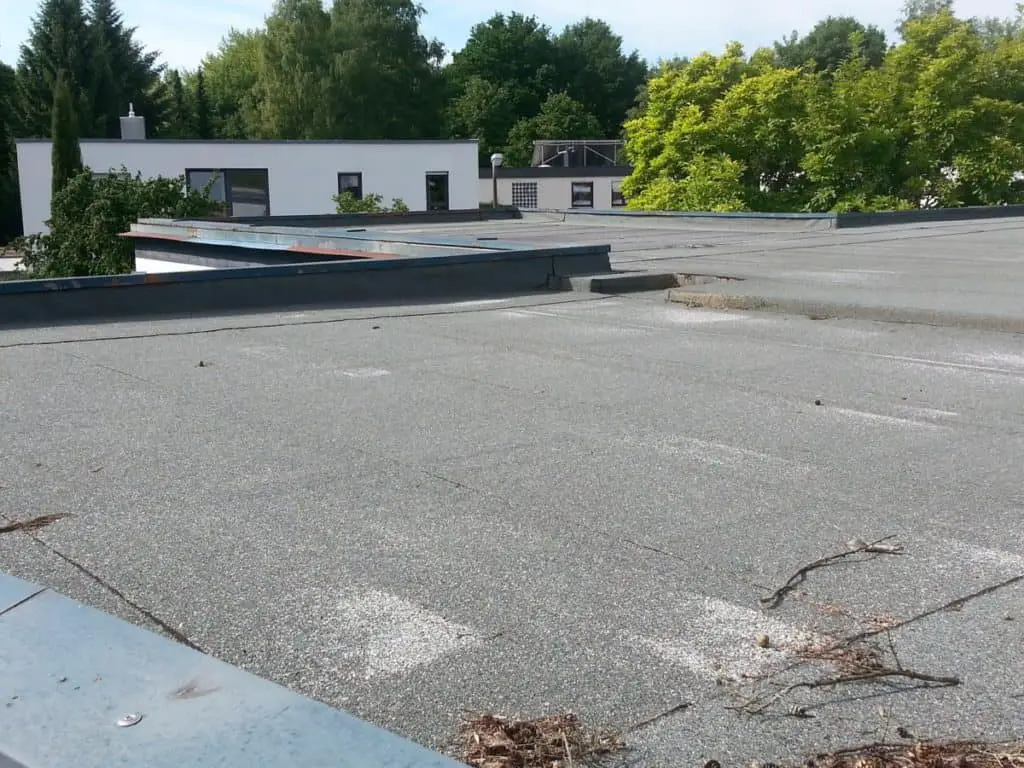
Yes, rainwater can be collected from most surfaces including a flat roof, but it is slightly trickier. Most flat rooves have some form of a gradient. Many building regulations require flat rooftops to have at last a 2% gradient. You can use this to add a channel or guttering to direct water into a downpipe.
One of the main problems of flat rooves is the surface; if it is a rough felt or gravel, you may want to change the surface to something smoother for better collection, cover it with a tarp or sheeting, or try something else.
Another option is to add an artificial gradient with a wooden frame and tarp. Create a structure with a steeper slope than the roof and tightly secure a tarp across the frame. Use lengths of guttering to catch and redirect any rain that runs from it.
If nothing else works, you can use any container you can find to place on the flat surface. Buckets, old tubs, and pond liners can be used to collect at least some of the rain that falls.
Rainwater collection with no roof
If you don’t have the necessary roof space or want to increase the amount you can collect, you have several options:
Tarp rainwater collection
If you have a useful hill or gradient on your property, you can place the tarp near the top and run a pipe from it down into the container. If not, you will need to submerge a barrel or container near your tarp.
- Dig a large flat basin shape into the ground a few inches deep, the same size and shape as your tarp. (Either at the top of a gradient or near your submerged container)
- Shape it, so it is lower in one corner to create a flow.
- Lay your tarp into the basin shape with the edges curving up at the sides to keep any water from running off the edge.
- Set up a pipe or rigid hose to collect the water from the lower corner and run it into your container.
In this video, you can see an excellent example of tarp rainwater collection:
Frame collection
A frame collection system is a small roof purposefully-built to collect rainwater. It can be as advanced or as simple as you like. At the very least, it should be a large smooth, inclined surface held off the ground by a rigid frame. You will need to add guttering to the lower edge to collect the water and run it to your collection container.
The surface on the frame can be anything you have that is suitable. If you don’t have rigid plastic sheeting, you can fix a tarp across it as long as it is pulled taut. However, if you#re creative, you could allow the tarp to sag, cut a small hole at the lowest point, and place a bucket underneath.
Direct container collection
This is one of the most straightforward but least efficient methods. Simply leave as many containers as you can out to collect rainwater. If you empty them regularly, you may be able to prevent mosquitoes from using them or algae from developing.
Rainwater above-ground collection
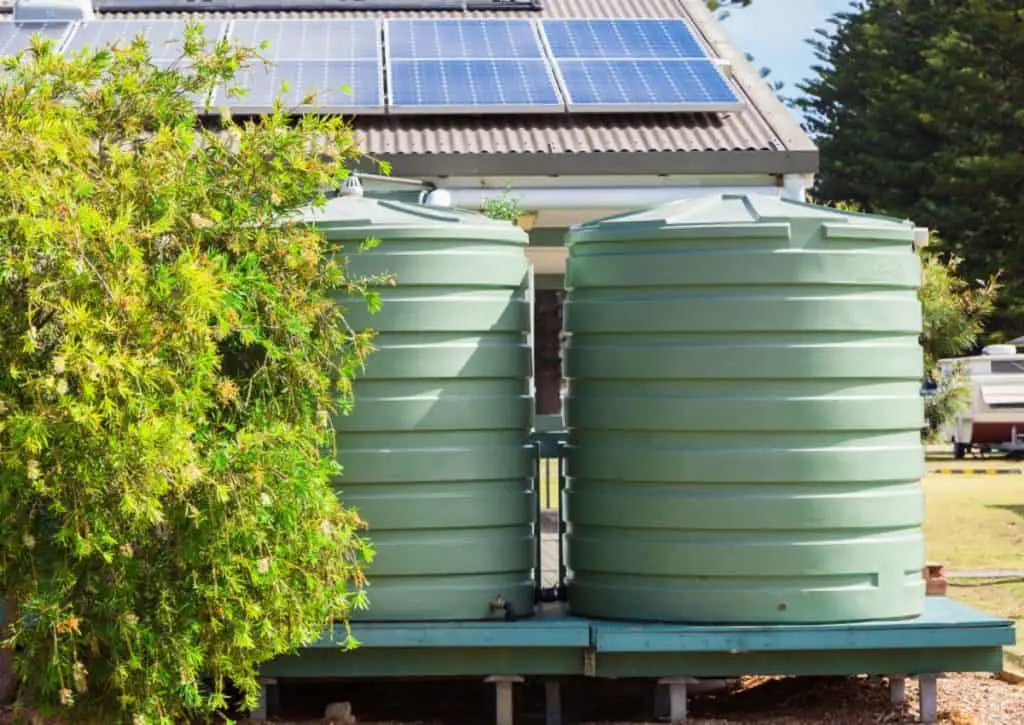
Once you’ve collected your rainwater, you must then decide how to store it. The simplest system is to use gravity to direct the water into an above-ground storage container. Usually, these are placed next to your house or roof surface, so minimal pipes, and guttering is required.
There are multiple types of containers you can use for this, but the bigger, the better. To make a difference in the amount of water you need from other sources, you will need to have a large capacity container. Because it is above ground, the container won’t be under as much pressure as those used for underground storage, so you can use less rigid containers.
Home depot stock a range of large water tanks that have been FDA approved for the storage of potable water. Their selection includes several differently sized tanks from Chem-Tainer Industries.
Benefits
- These above-ground systems are useful because they are easy to access. Bear in mind that you may need to add extra holes and systems to allow you to empty it and clean it regularly. If you choose to attach a spigot so you can take water from your storage, make sure it is large enough to empty quickly. If your container empties slowly, you will spend ages waiting to use your harvest.
- This is a simple, cheap system. You can get suitable storage containers like this very cheaply. Food grade IBC containers can be bought for around $100 or less and make great storage.
- If you keep your storage above ground, you can move it at any time. With care, you can change one container for another. This allows you to fill up several containers and means that you aren’t limited to just just one if you minimal space near your downspout.
Disadvantages
- Above ground storage can be in full sunlight, so may develop algae. To prevent this, use an opaque black or green container, or paint it black.
- You may also find that in cold weather, your water storage may freeze. To prevent this, you may need to wrap your container or add heating tape. Heating tape is an electrically heated tape that is attached to a power supply and wrapped around a pipe. It keeps the pipe at temperatures above freezing.
Rainwater underground cistern
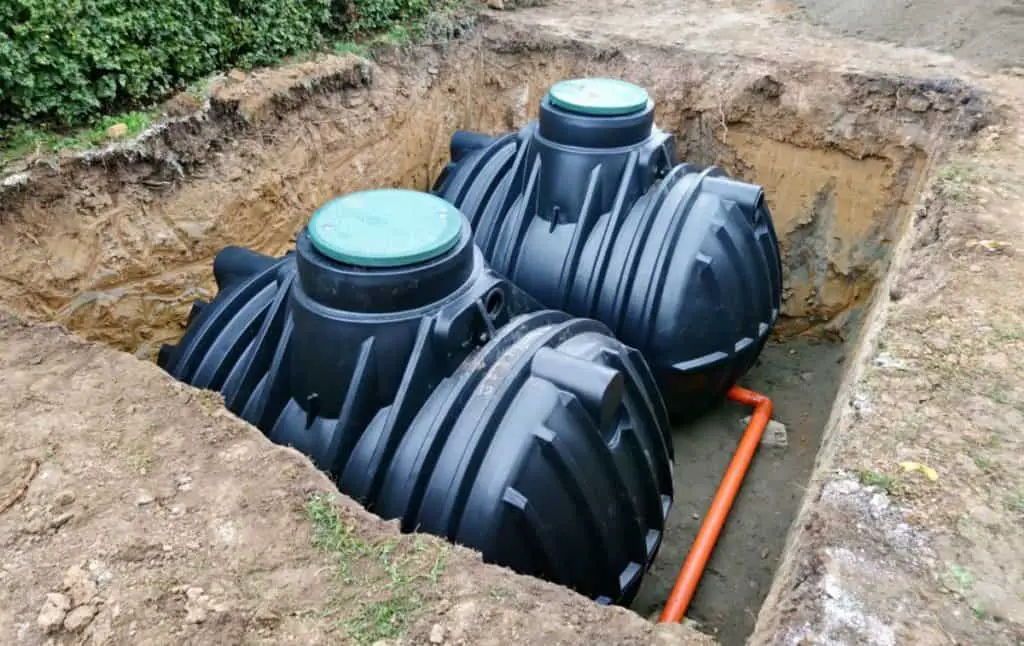
Underground cisterns allow you to use larger rigid containers. They are more expensive and require more preparation but are the ideal solution if you are planning on running your home from rainwater.
Dry system
The simplest method to store water under the ground is to submerge your cistern next to your house and direct the downspout directly into it. With this method, the downspout dries out when no rain is falling.
Wet system
This method requires more plumbing. A wet system is a cistern installed further away from your rainwater collection area. Once there is some water in the tank, the pipe to the cistern remains full of water. This means it should be carefully installed and thoroughly watertight.
With any submerged system, you will likely need some form of pump to get the water out. You can also build filtration systems into your storage so that any water you pump out is already prepared for use. From a cistern, you can run the water directly into you’re the system you want to use it for.
Benefits
- Being underground, your pipes and storage are unlikely to freeze.
- You can use much larger storage containers
- It means you won’t be looking at lots of large storage containers sat next to your house
- You’re unlikely to have problems with mosquito larvae or algae
- Filtration and purification systems can be added directly to the storage.
Disadvantages
- It is more expensive
- Plumbing and digging are required
- You will need to pump the water out of the container
- It is harder to get access for cleaning and maintenance.
How to use rainwater
Once you’ve collected and stored your rainwater, how will you use it?
Garden irrigation
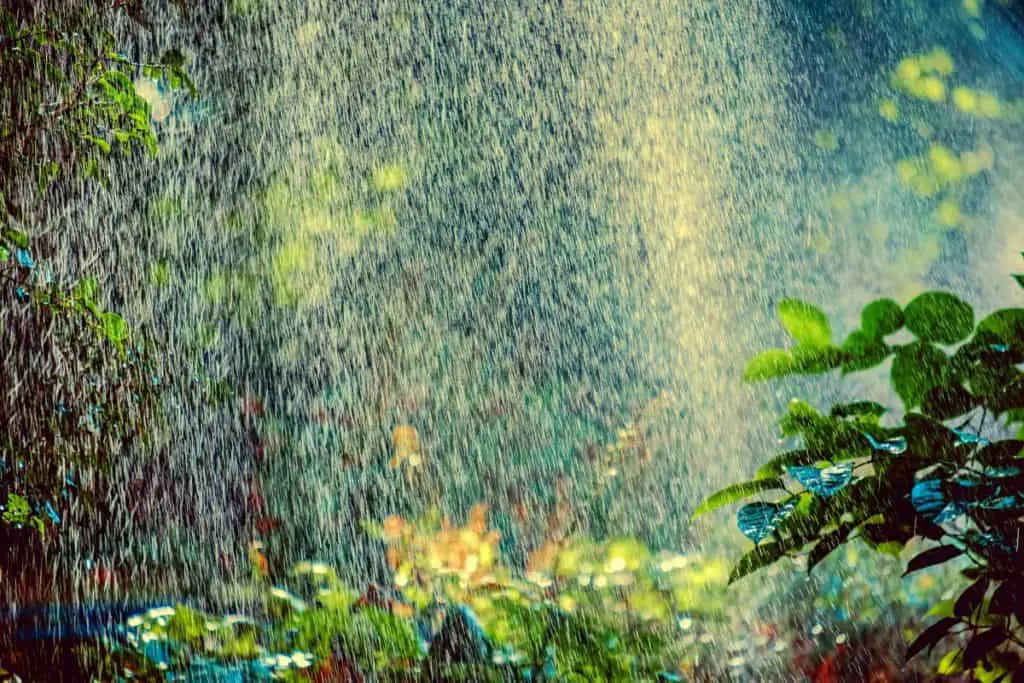
A common use for rainwater is in a garden irrigation system. This is an excellent choice because it allows you to save any other water supply you have for use in the house. It can also be used directly on the garden with no need for filtration or purification.
You can simply fill a watering can from your storage container and water your plants or run a hose directly from the container into your garden.
Some people choose to pump rainwater directly from underground storage into garden irrigation systems.
Non-drinking uses
With a simple filtration system, most rainwater can be used for basic non-drinking water uses. These could be for washing machines, toilet flushes, and some sinks and washbasins. Without purification, this water is non-potable, so it shouldn’t be used for personal washing drinking or preparing food.
Filtering and purifying for potable systems

With the correct treatment, rainwater can be used for potable systems, including drinking water. To do this, it should be filtered and purified. Several systems can do purification. UV purification is the best suited to small home systems. Even with this setup, this water should be tested to ensure it is suitable for drinking.
Related reading: 8 ways to purify water.
Is rainwater collection legal?
In the US, there are no federal restrictions to prevent you from harvesting rainwater. However, in some states and counties, they regulate how much you collect and how you collect it.
WorldWaterReserve.com has compiled a useful list which outlines the approach to rainwater harvesting in each state.
Buying water from an external source and storing it in a storage tanks
So what can you do if you don’t have a well and you don’t have enough rainwater? Buying in water can be an affordable solution. While buying water like this doesn’t fit with some definitions of off-grid living, it can be an effective means of filling a water deficit until you can put other systems in place.
Speak to friends and neighbors in your area to see if there is a local, community water source. These often allow you to fill containers for a very reasonable price. Large food grade IBC tanks are great to put on your trailer and taken directly to a water source, filled and brought back. Then you can use the water straight from the tank.
If you need smaller amounts of water or don’t have a truck, you can use several smaller containers.
If you have a large underground cistern, you can buy water in larger volumes. This can be delivered and pumped directly into your storage cistern. If you store a large amount of purchased water, it can give you enough time to build up your stocks of rainwater or investigate other methods.
What is the best system for me?
Setting up an adequate water source can be one of the biggest challenges of an off-grid home. If you’re unable to install a well, your options are narrow. In this situation, it is necessary to think creatively and, in some cases, push the boundaries of what off-grid means to you.
A combination of buying water in and collecting rainwater may be a necessary compromise to achieve your dream. If you plan on continuing with these systems for the long term, installing a large underground storage tank will be required. Capable pumps and filtration is also necessary.
Related reading: Why do you need to purify water?
All of these can be successfully installed yourself, but you may save time and money in the long run if you consult an expert. Particularly when dealing with drinking water, engaging professional help will ensure that your set up is entirely safe.
Check out my recommendations for equipment that will help you take your home off-grid.
My Off-Grid Product Recommendations
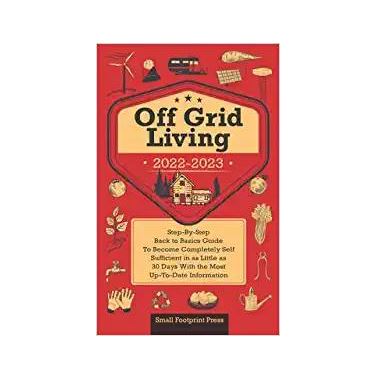
Useful Book: Off Grid Living 2022-2021 – This incredible step by step guide is a great read and gives you useful information about reaching self-sufficiency in just 30 days. Get the paperback on Amazon or read it free with a Kindle Unlimited subscription or listen to the audio version with Audible Plus membership.
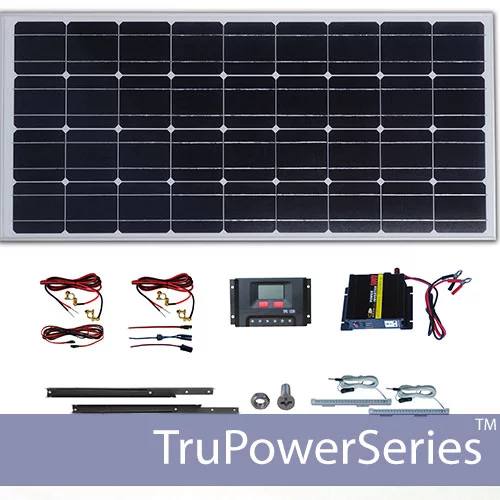
Small Solar Panel Systems: Silicon Solar – This is an excellent company that offers lots of products to get you started on your solar journey. Visit Silicon Solar.
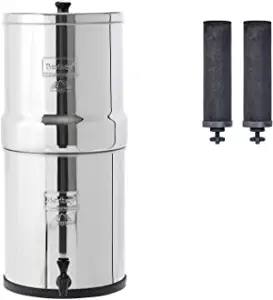
Family Water Filter: Big Berkey – For a fast, affordable water filter with no plumbing required, you can’t beat a Big Berkey gravity-fed filter like this one from Amazon.
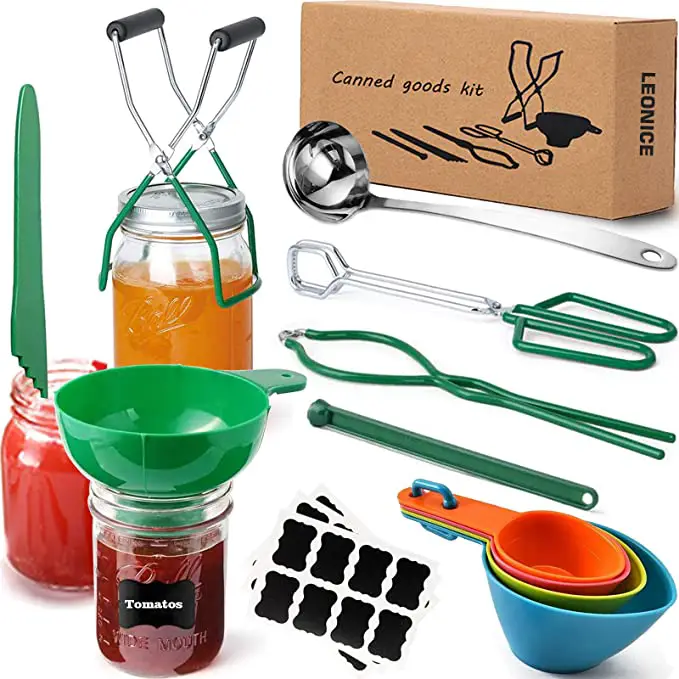
Canning Equipment – This canning starter kit, 22-quart Barton pressure canner and twelve-pack of Ball 16oz mason jars will help you preserve food as you work towards self-sufficiency.
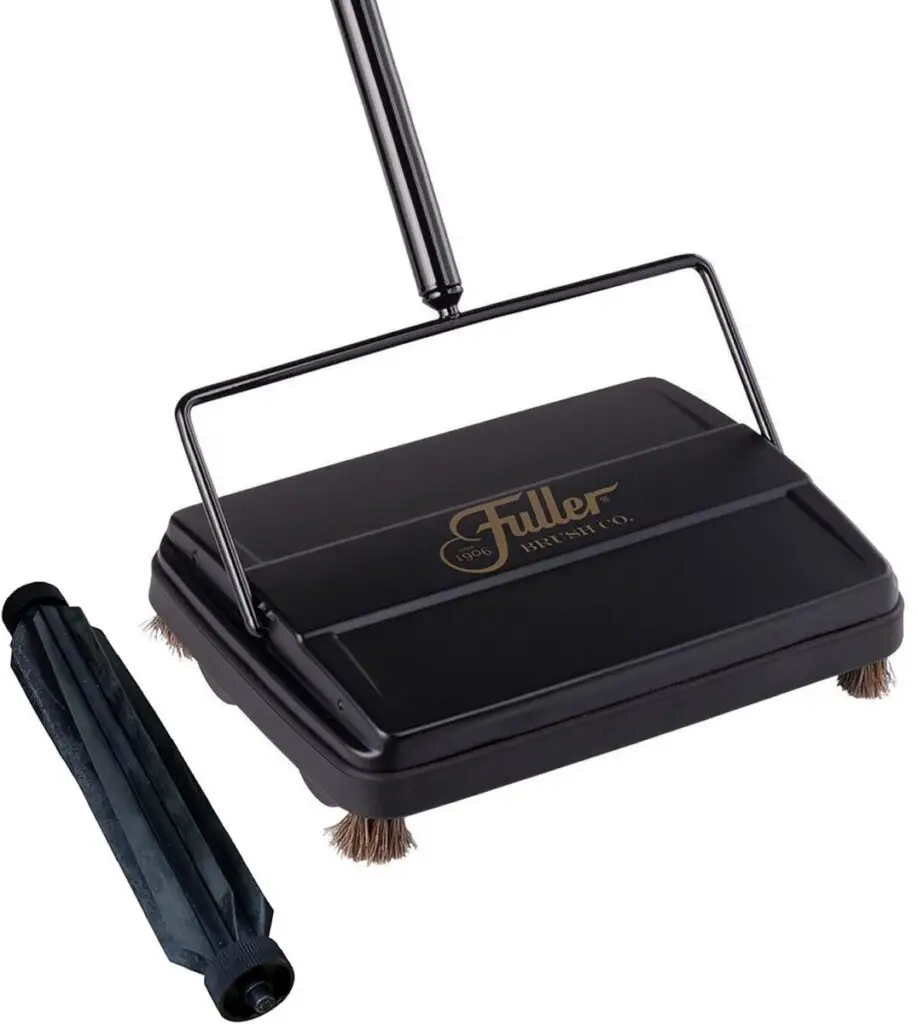
Cleaning: Fuller Carpet Sweeper –. This carpet sweeper is an ideal way to keep your home clean without using up your energy stores on vacuuming.

Handy Knife: Gerber Serrated Paraframe – This handy all-purpose knife is lightweight and ideal for all those little jobs around your home and garden.
